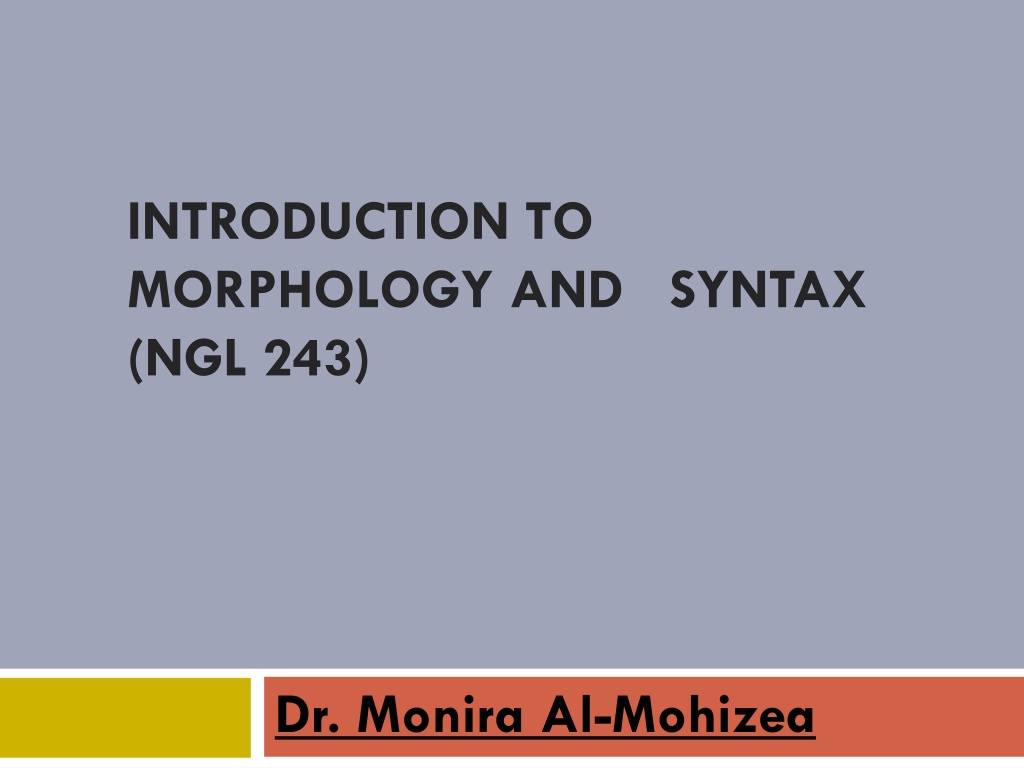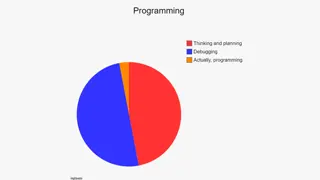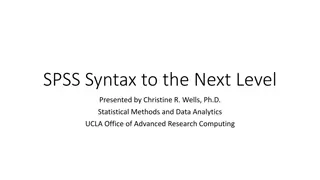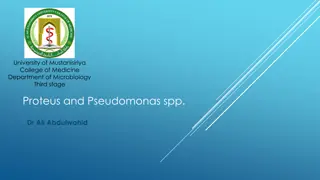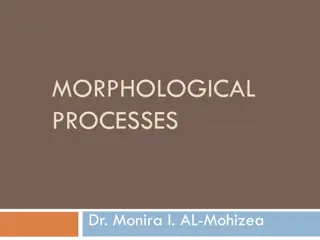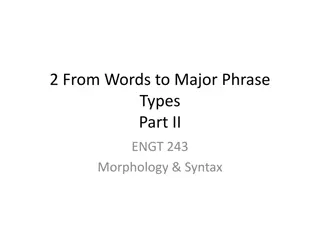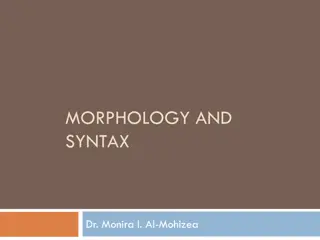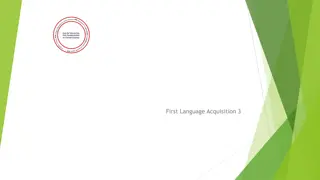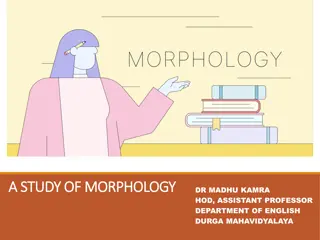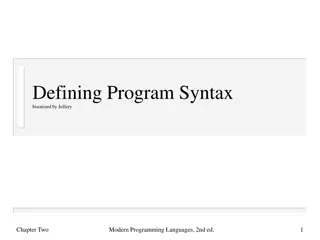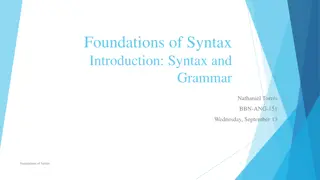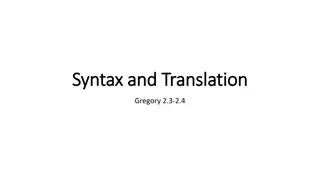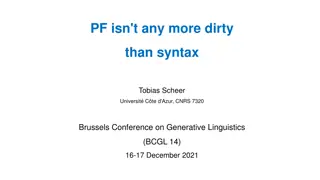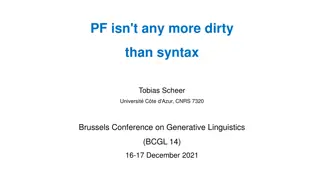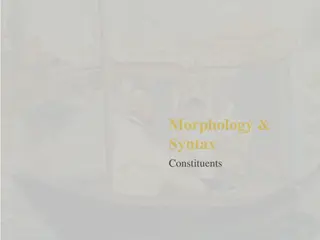Understanding Morphology and Syntax with Dr. Monira Al-Mohizea
Explore the fascinating realm of morphology and syntax in language with Dr. Monira Al-Mohizea's insightful guide. Learn about the internal structure of words, morphemes, and the aim of morphology to uncover subconscious knowledge. Delve into discussions on what constitutes a word and various definitions in linguistic studies.
Download Presentation

Please find below an Image/Link to download the presentation.
The content on the website is provided AS IS for your information and personal use only. It may not be sold, licensed, or shared on other websites without obtaining consent from the author. Download presentation by click this link. If you encounter any issues during the download, it is possible that the publisher has removed the file from their server.
E N D
Presentation Transcript
INTRODUCTION TO MORPHOLOGY AND SYNTAX (NGL 243) Dr. Monira Al-Mohizea
Outline What is morphology? 1.1 Introduction 1.2 What is a word ? 1.3 Words and lexemes 1.4 Morphemes
Introducing Morphology Definition: Morphology is simply the study of how words are put together. Morphology is the component of grammar that study the internal structure of words. It is concerned with: the speakers knowledge of words (e.g. goalkeeper). The rules used to interpret and form new words. 1. 2.
Consider the following words! Earwitness Televangelist Imho Wordrobe McJob Disorient Express
Aim of Morphology The aim of morphology is to make the subconscious knowledge of words explicit.
What is a word Morphology is the study of words internal structure but what is a word?? Discuss this with your partner.
A definition of a word Bloomfield (1935) a word is a minimum free form . It can occur on its own as an utterance, E.g. Boys! It is the smallest unit in language that can be manipulated by syntax (can be parsed).
Consider the following: The neighbour s dog disturbed burglars. Burglar's were disturbed by the neighbour s dogs. *s burglar weres disturb the ed by the neighbour s dog s. *sdog the neighbour s disturbed s burglar. The neighbour s *dog sdisturb burglar ed. *dog ed the s neighbour s disturb the s burglar.
Other definitions of a word (1) Word form: the shape that represent the word in speech or writing. In the written language word-forms are called Orthographic words. vs. phonological words. Consider this sentence above, how many words are there?? Compare it to: www.yahoo.com
Other definitions of a word (2) Lexeme or a lexical item is used when by word we mean vocabulary item, which requires a single dictionary entry. E.g. lexeme: write Writing Wrote written
Other definitions of a word (3) Words viewed as syntactic units are called grammatical words, whereby : a lexeme is considered together with its morphological and syntactic (morpho-syntactic) properties. E.g. speaking, spoke, spoken.
What is a morpheme? Is word the smallest unit of morphological structure? Discuss?
What is a morpheme? E.g. Boys! Boy (has meaning)+ -s(pl.) (grammatical function) the minimal unit which has a meaning or a grammatical function is called morpheme.
What is a morpheme? Linguists define a morpheme as the smallest unit of language that has its own meaning. Simple words such as, giraffe, wiggle, or yellow are morphemes. but so are prefixes like re- and pre- and suffixes like - ize and -er. So, a word is one or more morphemes that can stand alone in a language.
Exercise! Consider the following words, What do you notice: giraffe fraud murmur oops just Pistachio opposition intellectual crystallize prewash repressive Blackboard
(1) Simplex words vs. complex Words that consist of only one morpheme, such as the words in (1) giraffe, wiggle, or yellow are morphemes, can be termed simple or simplex words. Words that are made up of more than one morpheme, e.g. prewash, goalkeeper, and classroom are called complex.
Discussion How many words do we know in our language? Consider in reference to age groups:
How much do we know? Children entering school 13000* A highschool graduate 60000* A literate adult 120000* + names of people, places... The list of words for any language is called lexicon?? Existence of words in the native language is obvious, but in a foreign language it is difficult to recognize words. When you have mastered a language, you are able to recognize individual words without effort. * source: Akmajian, A. et al. 2001. Linguistics. Cambridge: MIT Press. p. 11
